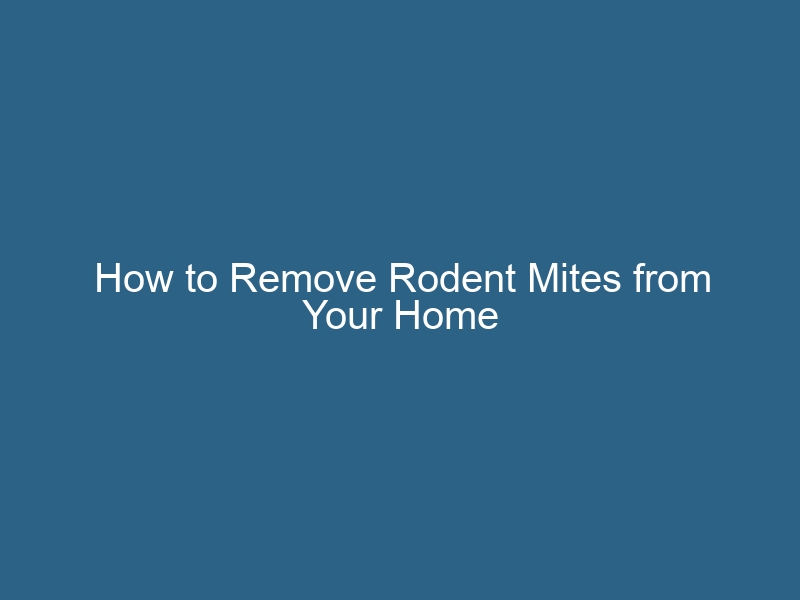Quck answer
Rodent mites can be a nuisance in your home, but there are steps you can take to get rid of them.
1. Identify the source: Determine if you have a rodent infestation, as mites often come from rodents.
2. Remove rodents: Use traps or call a professional exterminator to eliminate the rodent population.
3. Clean and vacuum: Thoroughly clean and vacuum your home, paying attention to areas where rodents may have been present.
4. Wash bedding and fabrics: Launder bedding, curtains, and other fabrics in hot water to kill any mites.
5. Use insecticides: Apply insecticides specifically designed for mites to affected areas.
6. Seal entry points: Seal any cracks or holes in your home to prevent rodents and mites from returning.
By following these steps, you can effectively eliminate rodent mites from your home and prevent future infestations.
When it comes to rodent mites, they are like something out of a horror movie. These mites can be found in homes where mice or rats have recently died, and they have no problem biting humans and feeding on their blood. There are three common types of rodent mites that can attack humans: the house mouse mite, the spiny rat mite, and the tropical rat mite. Due to their small size, it can be difficult to determine if you have these mites in your home. However, if you are experiencing itchy rashes, painful lesions, or blisters on your skin, it is possible that your home is infested with rodent mites and you need to get rid of them. Luckily, there are steps you can take to eliminate these pests from your home.
Strategy for Removing Rodent Mites
Rodent mites can survive away from their food source for up to 10 days as they search for new sources of food. Therefore, it is important to vacuum and clean your home daily for at least 10 days after eliminating the source of the mites in order to completely remove them from your home. After cleaning up mouse or rat droppings or removing their nests, it is recommended to spray your gloves with a disinfectant or bleach solution before taking them off.
The most crucial step is to remove the source of the mites. Without doing so, your efforts to eliminate the pests will be in vain and your home will remain infested.
Items You Will Need
-
Household bleach
-
Spray bottle
-
Rubber gloves
-
Mask or respirator
-
Eye protection
-
Trash bags
-
Vacuum
-
Cloths
Steps to Eliminate Rodent Mites
Step 1: Locate the Rodents
Find the mice or rats as well as their nests and remove them from your home. Nests can often be found in basements, attics, ceilings, and walls.
Step 2: Prepare Disinfectant Spray
Create a solution by mixing 1 1/2 cups of household bleach with 1 gallon of water. Transfer the solution into a clean spray bottle.
Step 3: Dispose of the Rodents
Wear gloves, a mask or respirator, and eye protection while spraying the dead animal, its nest, and the surrounding area with the disinfectant solution. Allow the solution to soak for 5 minutes. Place the animal and its nest in a plastic bag and seal it. Then, place this bag in another bag and seal it as well. Dispose of the bags in a covered trash can or consult your local health department for proper disposal instructions.
Step 4: Vacuum Your Home
Use a vacuum to thoroughly clean your entire home and remove the mites. Utilize the hose extension to clean hard-to-reach cracks, spaces, and areas between walls and floors. If your vacuum has a bag, freeze it to kill any mites and prevent them from escaping. If your vacuum has a canister, apply a bleach solution or disinfectant to kill the mites inside, then wipe it out with a damp cloth.
Step 5: Disinfect All Surfaces
Wipe down all potentially infested areas with a disinfectant or bleach solution and a damp cloth. Pay special attention to warm areas, such as furnaces and pipes, as mites tend to inhabit these places. Clean cracks and crevices around rat nests, as spiny rat mites often hide in these areas during the day. Remember to bleach the cleaning cloths to eliminate any remaining mites.


